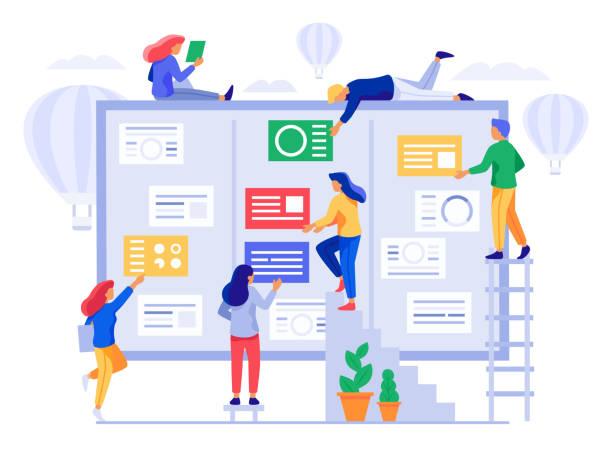The Importance of Website Speed in Today’s World

In the current digital age, website speed is not just an advantage but has become a necessity.
Today’s users, especially the younger generation, have less patience for loading web pages and expect information to be available quickly.
This issue directly impacts User Experience (UX).
A slow website can quickly frustrate users and drive them towards your competitors.
Research has shown that even a one-second delay in page loading can lead to a significant decrease in conversions and an increase in bounce rate.
Therefore, if you are looking to increase visits, improve search engine rankings, and ultimately boost sales or user engagement, fast website design should be a top priority.
This topic has an explanatory and thought-provoking content as to why this issue should be given importance and how it can affect your business.
Did you know that Google also considers website speed as one of the main ranking factors? This means that a slow site not only drives users away but also remains hidden from search engines.
This is a serious warning for all website owners to pay special attention to fast website design.
Does your current corporate website present a worthy image of your brand and attract new customers?
If not, turn this challenge into an opportunity with Rasaweb’s professional corporate website design services.
✅ Significantly improves your brand’s credibility and image.
✅ Paves the way for attracting leads and new customers for you.
⚡ For free and expert consultation, contact Rasaweb now!
Key Factors Affecting Website Speed
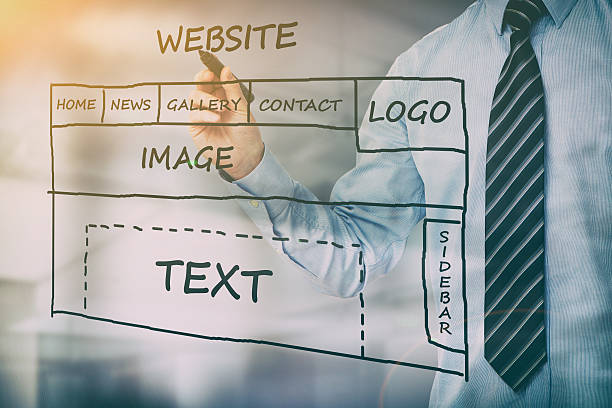
Website speed is influenced by various factors, understanding which is essential for any educational endeavor in fast website design.
One of the most important factors is the overall size of page files.
High-volume images, unoptimized videos, and heavy CSS and JavaScript files can severely slow down page loading.
The second factor is the quality and type of web hosting.
A slow server or shared hosting with limited resources can be the main bottleneck for your website’s speed.
Choosing a reliable and suitable hosting provider for your needs is a crucial step in increasing speed.
Furthermore, the number of HTTP requests a page needs for complete loading is also influential; the fewer the requests, the faster the loading speed.
Using too many unnecessary plugins in content management systems like WordPress can also reduce speed, as each plugin means adding more code and additional requests.
Specializing and optimizing codes, reducing redirects, and utilizing GZIP compression are other important factors.
For fast website design, all these details must be considered, and appropriate solutions for each must be devised.
A detailed review of these factors helps us formulate a comprehensive strategy for improving website performance.
Front-end Optimization Techniques and Tools for Speed

Front-end optimization is one of the most important parts of fast website design, directly impacting user experience.
This section includes all aspects that are loaded and processed in the user’s browser.
One of the first steps is image optimization.
Using appropriate image formats (like WebP) and compressing them without significant quality loss can dramatically reduce page sizes.
Tools like TinyPNG or online optimizers can be helpful in this regard.
The second technique is minification of CSS, JavaScript, and HTML files.
This process involves removing extra characters such as white spaces, comments, and new lines, which reduces file sizes and increases loading speed.
Also, combining CSS and JavaScript files into a single file can reduce the number of HTTP requests.
Using Lazy Loading for images and videos is also very effective, where content is only loaded when the user scrolls to that part of the page.
There are many guidelines regarding these techniques, and with a little research, they can be easily implemented.
To achieve a fast website design, these front-end actions are essential and fundamental.
The table below highlights some commonly used tools for front-end optimization:
| Tool | Main Use | Optimization Type |
|---|---|---|
| Google PageSpeed Insights | Analyze speed and provide suggestions | Comprehensive (Front-end and Back-end) |
| TinyPNG / Compressor.io | Image compression | File size reduction |
| Autoptimize (WordPress) | Minify and combine CSS/JS | Reduce HTTP requests |
| Cloudflare (CDN) | Content Delivery Network and caching | Content delivery speed |
Server-Side Optimization and Choosing Suitable Hosting
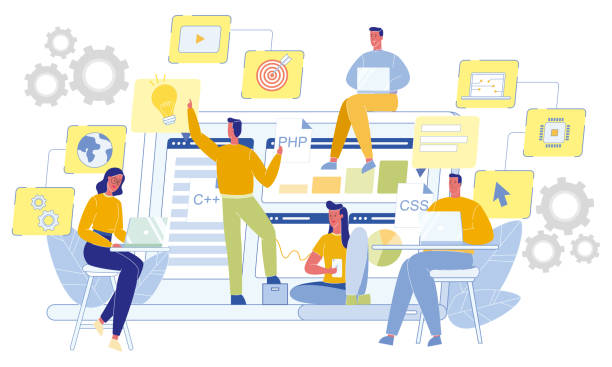
After front-end optimization, it’s time for server-side optimization, which plays a vital role in fast website design.
The first and perhaps most important step is choosing a strong and reliable hosting.
Cheap shared hosting might be suitable for starters, but with increasing traffic, they quickly affect your website’s performance.
Options like VPS (Virtual Private Server) hosting, dedicated servers, or Cloud Hosting are higher-performance alternatives that offer more dedicated resources.
Another important point is choosing a datacenter that should be as close as possible to your target audience to reduce latency.
Using the HTTP/2 protocol instead of HTTP/1.1 can significantly increase loading speed, as it allows for parallel requests and header compression.
Furthermore, database optimization is also of high importance.
Regular table cleanups, query optimization, and the use of indexes can improve data retrieval speed.
For content management systems like WordPress, using the latest PHP version (e.g., PHP 8.x) is highly recommended due to significant performance improvements.
These topics are specialized and require technical knowledge, but they are essential for achieving ultimate speed in fast website design.
A detailed analysis of your server needs and expected traffic can help in choosing the best solution.
Does your current website convert visitors into customers or drive them away? Solve this problem forever with professional corporate website design by Rasaweb!
✅ Build credibility and powerful branding
✅ Attract target customers and increase sales
⚡ Get a free consultation now!
The Importance of Image and Media Optimization
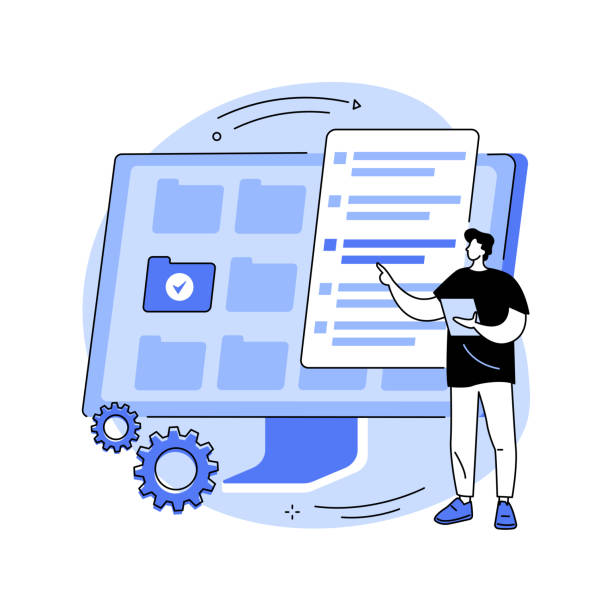
Images and other media files usually constitute the largest portion of a web page’s size.
Therefore, smart optimization of them is one of the most effective ways for fast website design.
Many websites use images with dimensions and resolutions far exceeding what’s needed, leading to prolonged loading times.
The first step is resizing images to the exact dimensions required on the web page.
If an image is to be displayed at 500 pixels wide, uploading a 2000-pixel wide version only wastes bandwidth and loading time.
The next step is choosing the appropriate file format.
The WebP format, developed by Google, is an excellent alternative to JPEG and PNG, offering very high compression while maintaining quality.
Various online tools and plugins are available for compressing images without noticeable quality loss.
In addition to images, video files can also be very heavy.
Instead of hosting videos directly on your server, it’s better to use specialized services like YouTube or Vimeo and embed the video on your site.
This significantly reduces your server load and improves page loading speed.
Also, for icon images, using SVG instead of PNG or JPG can drastically reduce file size and ensure display quality at any resolution.
This is an important educational section that every webmaster should pay attention to in order to achieve the goals of fast website design.
Caching Strategies for Increased Speed

Caching, or temporary data storage, is one of the most powerful strategies for fast website design and improving website performance.
When a user visits a website, their browser can store a portion of the content (such as images, CSS, and JavaScript files) locally.
On subsequent visits, instead of re-downloading these files from the server, the browser uses the cached version, resulting in much faster page loading.
This type of caching is known as “browser caching.”
In addition to browser caching, there is also server-side caching, which involves storing database query results, generated HTML pages, or API responses in the server’s memory.
This means that on subsequent requests, the server doesn’t need to reprocess information and can provide the response quickly.
Using a Content Delivery Network (CDN) is also an advanced type of caching that stores your website’s static files on various servers worldwide.
When a user visits your website, content is delivered from the closest CDN server to them, which significantly reduces loading time, especially for global users.
Tools like Redis or Memcached are very useful for database caching, and tools like Varnish Cache for caching entire website pages.
This is a specialized and guidance-oriented topic, and its correct implementation can have a dramatic impact on your website’s final speed.
Mobile Responsiveness and its Impact on Speed
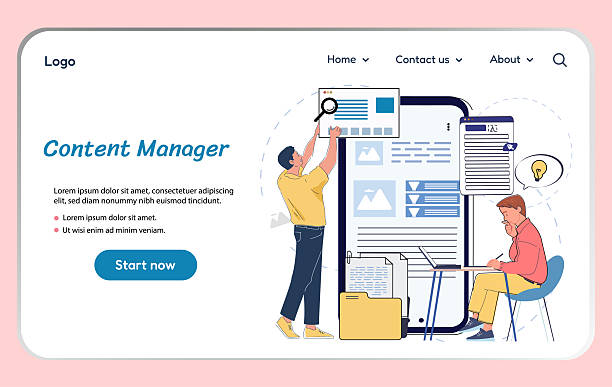
In today’s world, where mobile phone usage for internet access has far surpassed desktops, website responsiveness (Responsive Design) and its optimization for mobile is not just an optional feature, but a requirement for fast website design.
A responsive website is one that can dynamically adapt its layout to the user’s screen dimensions (whether mobile, tablet, or desktop).
But beyond merely adapting the layout, speed optimization for mobile devices is of particular importance.
Mobile internet speeds can be variable, and users are often on the go, so the need for faster page loading is more pronounced than ever.
Lack of mobile optimization can lead to increased data download size, slow rendering, and a poor user experience.
This directly affects bounce rate, user engagement, and SEO ranking.
Google also looks at the mobile version of websites first for ranking (Mobile-First Indexing).
Therefore, a precise analysis of your website’s performance on mobile devices is essential.
Using images with appropriate dimensions for mobile, reducing heavy JavaScript scripts, and implementing AMP (Accelerated Mobile Pages) can significantly improve speed.
The table below shows some key aspects of responsive design and mobile speed:
| Factor | Explanation | Impact on Speed |
|---|---|---|
| Responsive Images | Providing images with dimensions suitable for the display | Reduced download size |
| Code Minimization | Reducing unnecessary CSS/JS codes | Increased rendering speed |
| Web Fonts | Optimal use of fonts | Reduced font loading time |
| AMP / PWA | Dedicated mobile frameworks | Exceptionally fast user experience |
Website Performance Measurement and Monitoring Tools
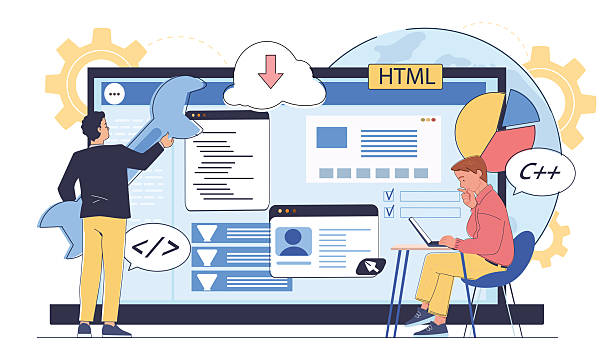
To ensure that your efforts for fast website design have been fruitful, you need continuous measurement and monitoring of website performance.
Numerous tools are available to help you identify the strengths and weaknesses of your site’s speed.
One of the most popular and comprehensive of these tools is Google PageSpeed Insights.
This tool gives you a speed score for desktop and mobile and provides suggestions for improvement.
It also displays Google’s Core Web Vitals, which include LCP (Largest Contentful Paint), FID (First Input Delay), and CLS (Cumulative Layout Shift), all crucial for SEO.
Other tools like GTmetrix and Pingdom Tools also provide similar information, including full load time, page size, and number of requests.
These tools even display Waterfall Charts, allowing you to see the loading order of elements and the time spent on each.
This analytical view helps you pinpoint exactly which part of your website is slow.
Additionally, using continuous monitoring tools like UptimeRobot or Site24x7 can notify you of any sudden drops in speed or website downtime.
This is a guidance section that helps you learn to constantly keep your website in top condition and ensure the stability of your fast website design.
Does your current website build the trust that potential customers should have in your business? If not, it’s time to get your professional and impactful corporate website with Rasaweb.
✅ Fully custom design tailored to your brand identity
✅ Increase lead generation and your business credibility in customers’ eyes⚡ Contact us for a free consultation!
Long-term Benefits of a Fast Website for Business
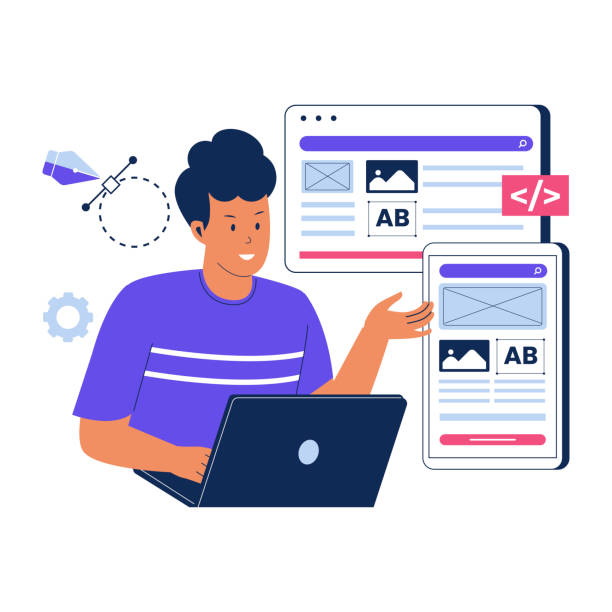
Investing in fast website design is not just about improving user experience; it brings long-term and sustainable benefits for your business.
The first and most important benefit is improved SEO (Search Engine Optimization).
Search engines like Google consider page loading speed as an important ranking factor.
A faster website has a better chance of ranking higher in search results pages, which means more organic traffic and, ultimately, more potential customers.
The second benefit is an increased Conversion Rate.
Users are more likely to make a purchase, fill out a form, or sign up for your services if they have a smooth and delay-free user experience.
Every second of delay can lead to a significant decrease in conversions.
The third benefit is a reduced Bounce Rate.
When pages load quickly, users are less inclined to leave the website and go to your competitors.
This means greater engagement and a longer duration of user presence on your website.
Additionally, a fast website creates a positive image of your brand, showcasing your professionalism and attention to detail.
This is an analytical and informative aspect of the strategic importance of website speed.
These benefits directly contribute to your business’s profitability and sustainable growth, further highlighting the necessity of fast website design.
Future Trends and Continuous Website Speed Optimization

The world of web is constantly changing and evolving, and with it, the need for fast website design also undergoes changes.
Future trends such as the emergence of new network technologies (like 5G), further development of AI in web optimization, and the growing need for interactive and content-rich websites all create new challenges and opportunities for website speed.
One of the most important future trends is the focus on Progressive Web Apps (PWAs), which provide an app-like user experience in the browser and are also capable of working offline.
These technologies are inherently designed for speed and stability.
Also, the emergence of WebAssembly allows developers to execute high-performance code directly in the browser, which can significantly improve the speed of complex web applications.
With the increasing importance of engaging content and 3D graphics on the web, the need for further optimization for quick loading of these elements also increases.
The important point is that speed optimization is not a one-time process, but a continuous effort.
With every content update, addition of new features, or change in technologies, you must re-monitor and optimize website performance.
This is a thought-provoking content on how we can prepare for a future with even faster websites.
Adopting this continuous approach ensures that your website always remains at its peak performance and provides the best experience for users, which is the ultimate goal of fast website design.
Frequently Asked Questions
| Question | Answer |
|---|---|
| What is fast website design? | The process of building websites that load quickly. |
| Why is website speed important? | It improves user experience, positively impacts SEO, and increases conversion rates. |
| What factors affect website loading speed? | Server speed, image size, code optimization, use of browser cache. |
| How can website speed be increased? | Image optimization, compressing CSS and JavaScript files, using a CDN, and choosing suitable hosting. |
| What are common tools for testing site speed? | Google PageSpeed Insights, GTmetrix, Pingdom Tools. |
| Does server’s geographical location affect speed? | Yes, a shorter distance between the user and the server leads to less latency and higher speed. |
| What does image optimization mean? | Reducing the file size of images without significantly compromising their quality. |
| What is browser caching and how does it help speed? | Temporary storage of website resources (like images, CSS, and JS files) in the user’s browser for faster loading on subsequent visits. |
| What is the impact of site speed on SEO? | Google considers site speed as a ranking factor; faster sites usually achieve better rankings. |
| How can CSS and JavaScript files be optimized? | By minifying and concatenating files to reduce size and number of requests. |
And other services of Rasaweb Advertising Agency in the field of advertising
Smart Website Development: A new service for increasing campaign management through user experience customization.
Smart UI/UX: An innovative platform for improving customer acquisition with SEO-driven content strategy.
Smart Google Ads: An effective tool for user engagement with the help of Google ad management.
Smart SEO: A new service for increasing online growth through key page optimization.
Smart Google Ads: An effective tool for increasing site visits with the help of custom programming.
And more than hundreds of other services in the field of internet advertising, advertising consultation, and organizational solutions
Internet Advertising | Advertising Strategy | Advertorial
Resources
The Importance of Site Speed at Webramz
The Role of Speed in Roopix Website Design
Website Speed Optimization at Seokar
Increasing Site Speed at Iranxpert
📍 Rasaweb Afarin Digital Marketing Agency, by providing comprehensive and innovative services, from fast website design to complex SEO strategies, paves the way for your business’s online success.
📍 Tehran, Mirdamad St., next to Central Bank, Kazeroon Southern Alley, Ramin Alley, No. 6


